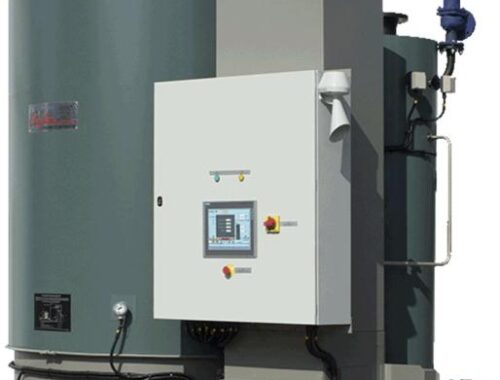Top-Tier Steam Boiler Manufacturing for Heavy Industry
In heavy industry steel, petrochemicals, pulp and paper, power generation unfailing, high-pressure steam is essential to maintain lines safe and productive. Selecting an Industrial Steam boiler manufacturer from a crowded worldwide sector significantly affects worker safety, regulatory compliance, and energy usage. Elite manufacturers develop systems that withstand corrosive fuels and demanding duty cycles by combining metallurgy, computer design, and digital control. Benefits every procurement manager desires when capital expenditures must span decades: their boilers provide continuous output, accept future retrofits, and shrink total cost of ownership.
Solid boiler design guidelines
Premier manufacturers engineer pressure vessels to ASME Section I or EN 12952 requirements, then exceed baseline factors of safety. Finite-element analysis guarantees shell thickness and ligament spacing by mapping localized stresses at tube-sheet joints, furnace turns, and manway doors, therefore allowing repeated thermal cycling. To prevent fatigue cracking, designers also replicate transitory upsets cold starts, load fluctuations, fuel composition changes. Tens of thousands of running hours provide a geometry that maintains roundness and weld integrity.
Modern materials selection techniques
Cutting-edge boilers run on duplex stainless, Inconel overlays when temperatures reach 550 °C, and chromium-molybdenum steels. Better than historic carbon steel these alloys resist creep, hydrogen attack, and chloride stress corrosion. Electroslag-refined 9Cr materials prevent impurity segregation and grain development, hence extending tube life, for supercritical service. On the water side, ferritic-austenitic mixes limit caustic gouging, hence lowering chemical treatment costs; electropolished internals prevent scaling.
Welding in precision fabrication

Robotic GTAW heads, five-axis laser cutters, and automated plate rollers create consistent seams with little dilution and low heat-affected zones. Before the hydrotest, advanced non-destructive tests include radiography, magnetic flux leakage, and phased-array ultrasonic check joint soundness. Integrated production execution systems document every weld pass, filler metal lot, and welder qualification to produce traceable digital passports accelerating root-cause analysis or retrofits decades later.
Integrated procedures for assurance of quality
Top-tier stores integrate quality right at every station. Long before a final inspection, statistical process control tests drill positioning accuracy, tube concentricity, and plate flatness. Combustion assemblies run factory fire-up on natural gas or light oil so engineers may adjust flame geometry, emissions, and turndown ratio prior to delivery. Third-party auditors see hydrostatic tests, providing end users confidence that paperwork reflects reality. ISO 9001 dashboards highlight deviations promptly.
Ensuring equipment from an Industrial Steam boiler manufacturer dedicated to strict design, premium materials, precision craftsmanship, complete quality assurance, and lifetime support guarantees heavy-industry facilities enjoy safer operations, smaller carbon footprints, and predictable operating budgets over the boiler’s multidecade lifespan.
Red Lights in Your Offer of Accident Settlement
A poor settlement agreement is the last thing you need when recovering from an automobile accident. Particularly if you are not conversant with legal jargon or the actual worth of your claim, insurance firms could bully you into accepting less than what you are entitled to. Early recognition of warning indicators is vital to prevent long-term financial stress. Whether handling physical injuries, auto repairs, or even legal difficulties like führerschein mpu verjährung, remaining vigilant about unfair settlement practices is crucial.
Offer Too Quick
One of the biggest caution signals is a settlement offer that arrives rather quickly following the accident. Although quick resolution would appear handy, it usually indicates that the insurance is seeking to control their pay-off.
Be cautious if
- Days following the accident you get an offer.
- There has not been any appropriate damage or injury evaluation done.
- The insurance company presses you to sign fast.
This approach depends on the knowledge that many injuries take days or weeks to completely show. Accepting too quickly could cause one to miss long-term compensation.

Pressure to Sign
Many times, victims take less than they deserve using high-pressure techniques. Back off if you feel hurried or controlled.
- Typical pressure indicators are threats of the offer being withdrawn.
- Declarations like “This is the best you’ll get.”
- Many calls or messages pushing for a choice.
Review the offer, see a lawyer, and give some thought to your position. You are entitled to do so. Pressing is a method, not a deadline.
Absence of Recordation
A good settlement offer should be grounded on facts. It’s a big red flag if an insurer assigns you a figure without supporting medical records, repair estimates, or loss computations.
Things you might want
- A formal justification on the computation of the offer.
- List of property damage and medical expenses itemized.
- Every report or witness statement applied in assessment.
Transparency is absolutely crucial. The offer most certainly isn’t fair if the insurer is evasive or reluctant to provide this material.
A settlement offer should make you not suspicious but rather comfortable. Look for red signals including pressured to sign, ambiguous language, and hurried offerings. Always ask for clarity; slow down and, where necessary, call on a professional. In the framework of more general legal concerns, like führerschein mpu verjährung, guaranteeing justice in all legal transactions—including accident settlements—is absolutely essential for long-term peace of mind.


